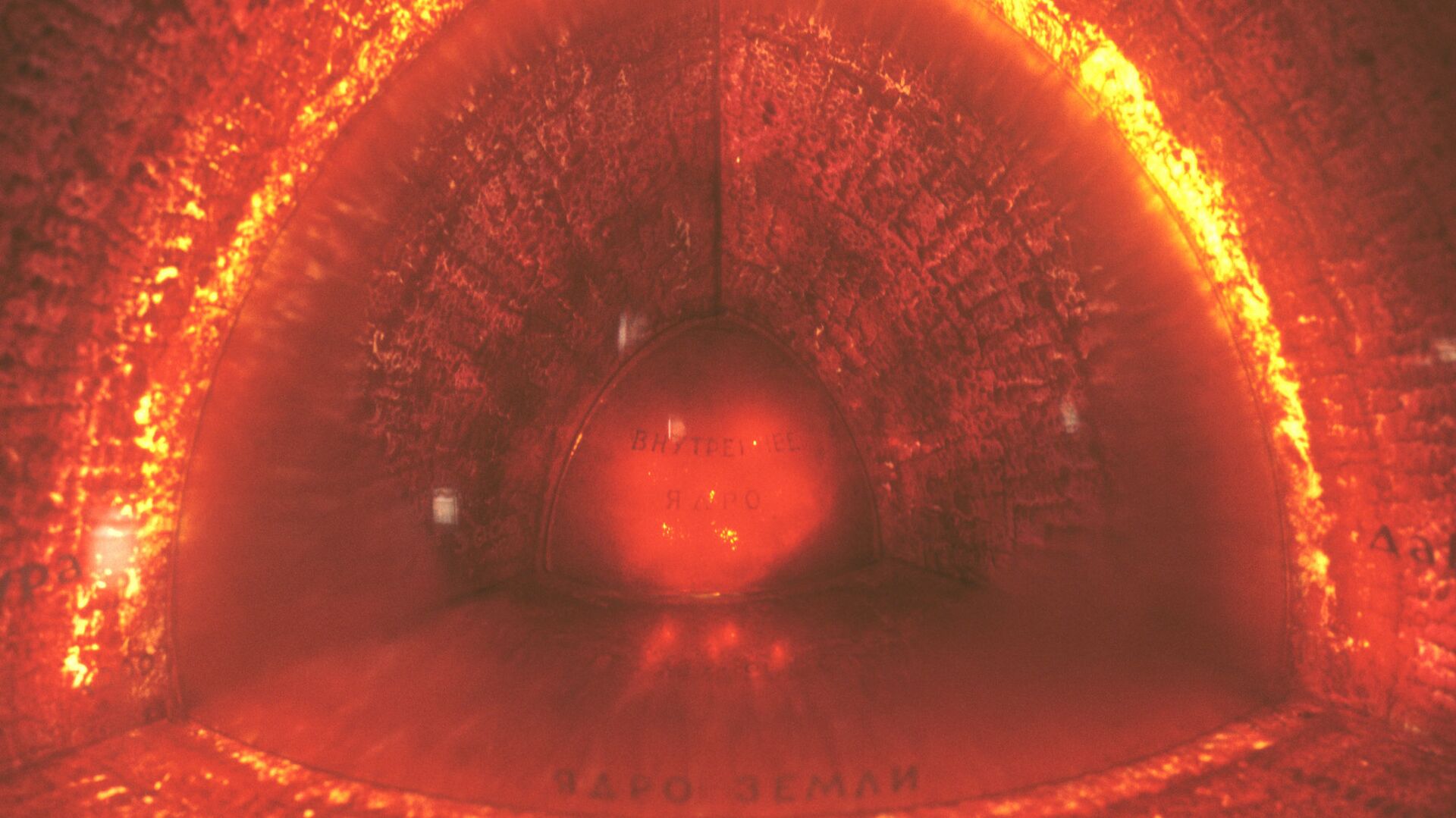https://sputnikglobe.com/20220301/earths-inner-core-could-be-comprised-of-superionic-alloy-study-suggests-1093496926.html
Earth's Inner Core Could Be Comprised of 'Superionic Alloy,' Study Suggests
Earth's Inner Core Could Be Comprised of 'Superionic Alloy,' Study Suggests
Sputnik International
The results of the new study may help explain why Earth's inner core structure "seems to change so much over time" and how convection currents that generate... 01.03.2022, Sputnik International
2022-03-01T18:56+0000
2022-03-01T18:56+0000
2022-11-03T19:33+0000
science & tech
core
study
earth
https://cdn1.img.sputnikglobe.com/img/103935/56/1039355656_0:639:2004:1766_1920x0_80_0_0_4aa257c403c54152b932a126386ac900.jpg
New research suggests that the nature of our planet's inner core may be quite different from what was previously believed, Live Science reports.According to the media outlet, computer simulations conducted by the authors of the new study show that Earth's inner core could exist in a "superionic state," with a "whirling mix of hydrogen, oxygen and carbon molecules" continuously "sloshing through a grid-like lattice of iron."Because sending a probe into Earth's core, with its extreme pressures and high temperatures, would be problematic, to put it mildly, the researchers instead used a computer programme designed to recreate the core's conditions on elements that likely found there – such as iron, hydrogen, oxygen and carbon – and fed seismic data to the programme.The resulting simulations suggest that atoms in Earth's core would be transformed into a superionic alloy, which is "a framework of iron atoms around which the other elements, driven by powerful convection currents, are able to freely swim," as the media outlet puts it.While the results of this simulation may help explain why Earth's inner core structure "seems to change so much over time" and how convection currents that generate our planet's magnetic field are created, this model is still yet to be proven, the media outlet points out.
https://sputnikglobe.com/20211125/how-likely-is-earths-magnetic-field-flip-to-trigger-doomsday-scenario-for-our-planet-1091014379.html
earth
Sputnik International
feedback@sputniknews.com
+74956456601
MIA „Rossiya Segodnya“
2022
News
en_EN
Sputnik International
feedback@sputniknews.com
+74956456601
MIA „Rossiya Segodnya“
Sputnik International
feedback@sputniknews.com
+74956456601
MIA „Rossiya Segodnya“
science & tech, core, study, earth
science & tech, core, study, earth
Earth's Inner Core Could Be Comprised of 'Superionic Alloy,' Study Suggests
18:56 GMT 01.03.2022 (Updated: 19:33 GMT 03.11.2022) The results of the new study may help explain why Earth's inner core structure "seems to change so much over time" and how convection currents that generate our planet's magnetic field are created, though this model is still yet to be proven.
New research suggests that the nature of our planet's inner core may be quite different from what was previously believed, Live Science reports.
According to the media outlet, computer simulations conducted by the authors of the new study show that Earth's inner core could exist in a "superionic state," with a "whirling mix of hydrogen, oxygen and carbon molecules" continuously "sloshing through a grid-like lattice of iron."
"We find that hydrogen, oxygen and carbon in hexagonal close-packed iron transform to a superionic state under the inner core conditions, showing high diffusion coefficients like a liquid," the team states in their paper. "This suggests that the inner core can be in a superionic state rather than a normal solid state."
Because sending a probe into Earth's core, with its extreme pressures and high temperatures, would be problematic, to put it mildly, the researchers instead used a computer programme designed to recreate the core's conditions on elements that likely found there – such as iron, hydrogen, oxygen and carbon – and fed seismic data to the programme.

25 November 2021, 12:25 GMT
The resulting simulations suggest that atoms in Earth's core would be transformed into a superionic alloy, which is "a framework of iron atoms around which the other elements, driven by powerful convection currents, are able to freely swim," as the media outlet puts it.
"It is quite abnormal," said Yu He, geophysicist at the Chinese Academy of Sciences and first author of the study. "The solidification of iron at the inner core boundary does not change the mobility of these light elements, and the convection of light elements is continuous in the inner core."
While the results of this simulation may help explain why Earth's inner core structure "seems to change so much over time" and how convection currents that generate our planet's magnetic field are created, this model is still yet to be proven, the media outlet points out.


